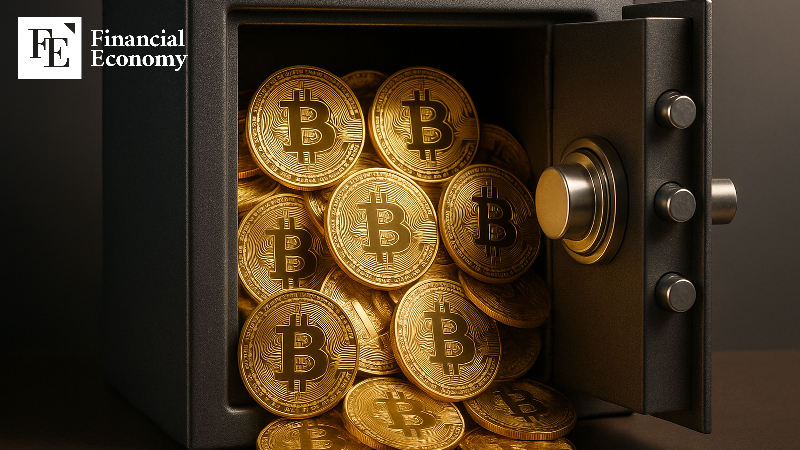“No to CBDCs, Yes to Bitcoin” — Trump Unveils Blueprint for Crypto Policy
Input
Modified
The Trump administration unveils sweeping plans to overhaul cryptocurrency regulations Comprehensive restructuring of digital asset classification, taxation, and compliance frameworks Bitcoin to be recognized and stockpiled as a strategic reserve asset

U.S. President Donald Trump has made clear his strong commitment to integrating cryptocurrencies into the broader American economy. Through a newly released White House report, his administration has laid out a sweeping reform plan for digital asset regulations, reaffirming a national policy direction that recognizes cryptocurrencies—particularly Bitcoin—as strategic reserve assets.
White House Unveils Cryptocurrency Roadmap
On July 30 (local time), U.S. media outlets including The New York Times and Axios reported that the White House released a 168-page report prepared by its presidential task force on digital assets. The report calls on all federal agencies to adopt and ease regulations on digital assets. This initiative stems from an executive order signed by President Donald Trump shortly after his inauguration in January, which directed the formation of a task force to enhance U.S. leadership in the digital asset industry and develop a concrete regulatory roadmap.
The report recommends establishing a clear framework to classify digital assets as either "securities" or "commodities." Under this proposal, the Securities and Exchange Commission (SEC) would regulate assets categorized as securities, while the Commodity Futures Trading Commission (CFTC) would oversee those classified as commodities. Notably, the report emphasizes that Bitcoin and other spot-based markets should fall under the jurisdiction of the CFTC.
SEC Commissioner Paul Atkins expressed support for the report, stating, “A rational regulatory framework for digital assets will not only foster innovation but also protect investors and strengthen the competitiveness of U.S. capital markets.”
Will CBDCs Lose Their Place?
The White House report also recommends easing regulations to allow banks to custody cryptocurrencies and offer related services. It argues that the current licensing process is overly complex and opaque, creating unnecessary barriers for banks. To address this, the report urges streamlining the approval process and clarifying regulatory standards.
Reforming the taxation framework is another key recommendation. The report notes that digital assets possess characteristics distinct from traditional stocks or commodities, particularly with new income structures like staking. It calls for a tailored tax system that categorizes digital assets as a separate class under federal income tax law, with rules designed specifically for their use cases.
Stablecoin policy also figures prominently. The report asserts that dollar-pegged stablecoins can strengthen the global role of the U.S. dollar, and suggests encouraging their development. In contrast, it takes a firm stance against central bank digital currencies (CBDCs), stating that such tools could enable excessive government surveillance of individual financial activity. It explicitly urges Congress to pass the CBDC Anti-Surveillance State Act, which would prohibit further research and development of a U.S. CBDC.

Bitcoin Reserves Grow in U.S. Treasury
The White House report also calls for a formal strategy enabling federal agencies—such as the Treasury Department and the Commerce Department—to acquire additional bitcoin for long-term reserves. This marks the first time the administration has explicitly articulated its intent to manage bitcoin as a strategic reserve asset at the federal level, institutionalizing ideas previously outlined through executive orders.
Crucially, the strategy is expected to be implemented without new spending or tax increases. The report states that bitcoin accumulation must be carried out “in ways that are budget neutral and do not impose incremental costs on U.S. taxpayers.” This suggests the government may rely on confiscated assets or other non-appropriated funds to bolster its bitcoin holdings. As of now, the U.S. government is believed to hold around 200,000 BTC, primarily acquired through law enforcement seizures.
Some analysts believe the U.S. may even consider selling a portion of its gold reserves to purchase more bitcoin. Although the report does not explicitly reference gold, the idea of reallocating from physical to digital stores of value has gained traction. Dan Morehead, CEO of crypto investment firm Pantera Capital, predicted in May that the U.S. government could liquidate up to $600 billion in gold holdings to invest in bitcoin. “The U.S. is sitting on enough gold in Fort Knox to represent 11 million years of labor wages,” he said. “That’s an archaic mindset—something out of the 40th century BCE. Eventually, that gold will be converted into bitcoin.”




















